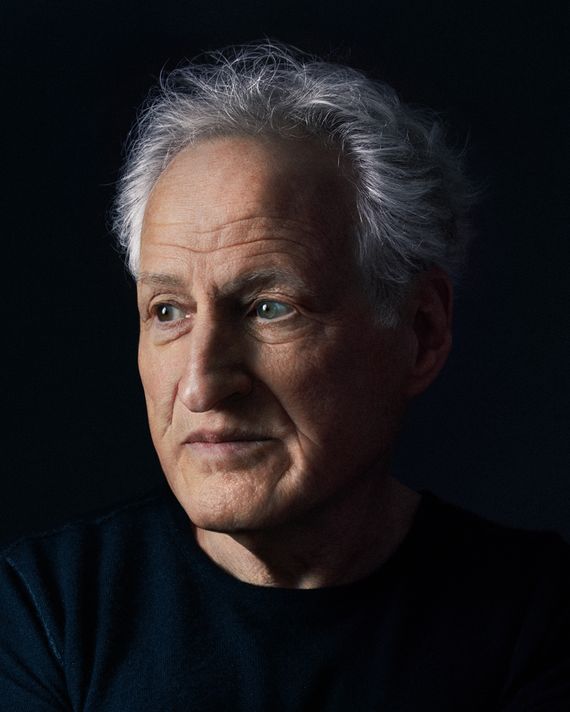


Lately on X, the platform formerly known as Twitter, my timeline is filled with vapid posts orbiting the same few topics like water whirlpooling down a drain. Last week, for instance, the chatter was dominated by talk of Taylor Swift’s romance with the football player Travis Kelce. If you tried to talk about anything else, the platform’s algorithmic feed seemed to sweep you into irrelevance. Users who pay for Elon Musk’s blue-check verification system now dominate the platform, often with far-right-wing commentary and outright disinformation; Musk rewards these users monetarily based on the engagement that their posts drive, regardless of their veracity. The decay of the system is apparent in the spread of fake news and mislabelled videos related to Hamas’s attack on Israel.
Elsewhere online, things are similarly bleak. Instagram’s feed pushes months-old posts and product ads instead of photos from friends. Google search is cluttered with junky results, and S.E.O. hackers have ruined the trick of adding “Reddit” to searches to find human-generated answers. Meanwhile, Facebook’s parent company, Meta, in its latest bid for relevance, is reportedly developing artificial-intelligence chatbots with various “sassy” personalities that will be added to its apps, including a role-playing D. & D. Dungeon Master based on Snoop Dogg. The prospect of interacting with such a character sounds about as appealing as texting with one of those spam bots that asks you if they have the right number.
The social-media Web as we knew it, a place where we consumed the posts of our fellow-humans and posted in return, appears to be over. The precipitous decline of X is the bellwether for a new era of the Internet that simply feels less fun than it used to be. Remember having fun online? It meant stumbling onto a Web site you’d never imagined existed, receiving a meme you hadn’t already seen regurgitated a dozen times, and maybe even playing a little video game in your browser. These experiences don’t seem as readily available now as they were a decade ago. In large part, this is because a handful of giant social networks have taken over the open space of the Internet, centralizing and homogenizing our experiences through their own opaque and shifting content-sorting systems. When those platforms decay, as Twitter has under Elon Musk, there is no other comparable platform in the ecosystem to replace them. A few alternative sites, including Bluesky and Discord, have sought to absorb disaffected Twitter users. But like sproutlings on the rain-forest floor, blocked by the canopy, online spaces that offer fresh experiences lack much room to grow.
Read the rest of this article at: The New Yorker
Last week, Delta Air Lines announced changes to its SkyMiles program that will make accruing status and taking advantage of perks much harder. Instead of relying on a combination of dollars spent and miles traveled in the air, Delta will grant status based on a single metric—dollars spent—and raise the amount of spending required to get it. In short, SkyMiles is no longer a frequent-flier program; it’s a big-spender program. These changes are so drastic that one of the reporters at the preeminent travel-rewards website The Points Guy declared that he’s going to “stop chasing airline status.”
When even the points insiders are sick of playing the mileage game, something has clearly gone wrong. In fact, frequent-flier programs are a symptom of a much deeper rot in the American air-travel industry. And although getting mad at airlines is perfectly reasonable, the blame ultimately lies with Congress.
From the late 1930s through the ’70s, the federal government regulated airlines as a public utility. The Civil Aeronautics Board decided which airlines could fly what routes and how much they could charge. It aimed to set prices that were fair for travelers and that would provide airlines with a modest profit. Then, in 1978, Congress passed a sweeping law deregulating the airline industry and ultimately abolishing the CAB. Unleashed from regulation, airlines devised new tactics to capture the market. American Airlines was one of the most aggressive. In the lead-up to the deregulation bills, it created discount “super saver” fares to sell off the final few remaining seats on planes. That meant cheap prices for last-minute travelers and more revenue for American, because the planes were going to take off whether or not the seat was filled. But these fares upset business travelers, who tended to buy tickets further in advance for higher prices. So in 1981, American developed AAdvantage, its frequent-flier program, to give them additional benefits. Other airlines followed suit.
In the early years, these programs were simple, like the punch card at a café where your 11th coffee is free. But three big changes transformed them into the systems we know today. First, in 1987, American partnered with Citibank to offer a branded credit card that offered points redeemable for flights on the airline. Second, in the ’90s, the airlines proliferated the number of fare classes, charging differential prices for tickets. With more complicated fare structures came the third change: Virgin America realized that the amount people spend on a flight, based on the fare class, is more important to its bottom line than the number of miles flown. So, in 2007, it introduced a loyalty program rewarding money spent rather than mileage accrued.
Read the rest of this article at: The Atlantic
I don’t like being in the same place for a long time,” Michael Mann tells me over lunch in Modena, Italy. The director has lived in Los Angeles for the past five decades with his wife, Summer, an artist. But in 2022, as he worked on his new film, Ferrari, the city where car manufacturer Enzo Ferrari lived and died became a second home. Ferrari might be the closest thing Mann has had to a dream project, which might also be why he seems so happy nowadays. I’ve interviewed the director maybe a dozen times over the past decade, and I’ve rarely seen him so animated. He has been trying to get the biographical racing drama — which follows Enzo’s (Adam Driver) marital and professional turmoil during a year in which he nearly lost just about everything he had — made since the mid-1990s.
Read the rest of this article at: Vulture
The first images beamed back from the James Webb Space Telescope (JWST) were filled with jewels and fire. That’s what the galaxies look like, tiny and distant, resplendent in false-colour contrast: red, gold, and white-blue. Some stretched like gummy candies from gravitational lensing. Some radiated a six-point star, the signature artefact of JWST’s hexagonal mirrors. In one image, four large galaxies held for a breath in their cosmic dance, a moment in a long gravitational embrace that will end with their eventual merging. Under JWST’s gaze, the rusty crags of the Carina Nebula were translucent to the countless stars being born within. In the telescope’s infrared vision, dust is transparent. Nascent stars were unveiled; the most distant galaxies ever seen, recorded.
These images were chosen to impress: a stellar nursery, a galactic dance, the Universe’s first aeons, the death shroud of an exploded star. The fifth image is a graph of a wiggly blue line, studded with white data points. Four peaks of the blue wiggle are labelled ‘Water H2O’, marking the wavelengths of light absorbed by water molecules in an atmosphere. It is an image so unremarkable that NASA presented it over an artist’s impression of an exoplanet and star. Writing in The New York Times in July 2022, Joshua Sokol described the secretive process behind selecting these first images, full of visual splendour and scientific promise – the ‘early highlight reel’ that would, as the US president Joe Biden put it, ‘remind the world that America can do big things’. But it was that plain graph I was most excited to see. Not because it was beautiful, but because of what it meant: it was the portrait of an atmosphere of a planet 1,120 light years away. The first of many to come. I didn’t care about this particular gas giant. But I knew that other planets JWST could ‘see’ might be possible homes to life.
Read the rest of this article at: Aeon
Something strange happened the first time I encountered an article online that I wrote for a print magazine. The article was an old-fashioned feature that had taken me months to report, then perhaps six weeks to write, plus another six to eight weeks to edit and rewrite with the help of capable editors, copy editors and fact-checkers who helped give the magazine prose of yesteryear its distinctive glossy finish. The layered process by which such texts were produced meant that I had read through my article with close attention over a dozen times before it was published, by which point I could recite long passages of my prose by heart.
Yet the sentences and paragraphs that I saw swimming before me on the screen clearly weren’t mine. Rather, they read like a raw, unfinished version of my actual article—an undergraduate parody of something that took me months to write. I was gesticulating wildly where I should have been quiet, drawing attention to myself at weird junctures, and making weird faces at the camera. Points I had made in a sensible, even-toned fashion had been washed out or faded into the background, making it hard to follow my argument. I was living the dream of going into an important meeting with no pants on, except I wasn’t dreaming. Hundreds of thousands of people would soon be seeing this unwonted version of my prose self, stammering and half naked.
There had to be a rational explanation for the disaster on my desktop. My first guess was that a well-meaning copy editor at one of America’s most august magazines had accidently uploaded the wrong file, causing an early editorial draft from months ago to populate the magazine’s website. On the verge of calling my editor to alert her to this embarrassing error, I thought to compare the text onscreen to the final galley proof, which I had printed out on paper. (The editing process at print magazines back then involved a succession of proofs that showed the author and her editor the text of the article in a progression of magazine-width columns, then layouts.) Trembling, I located the final proof on my desk, and sat down to reread the product of months of my labor.
Very soon, I found that my blood pressure was returning to normal. The galley proof was identical to the text I remembered writing—serious in the right places, funny in others, embedded in an argument that made logical sense. In other words, it read like the product of months of work, supervised by other high-end professionals whose job was to pay close attention to what they read. What happened was now crystal clear: Someone had indeed published an early, half-finished draft of my article on the magazine’s website.
Read the rest of this article at: Tablet




